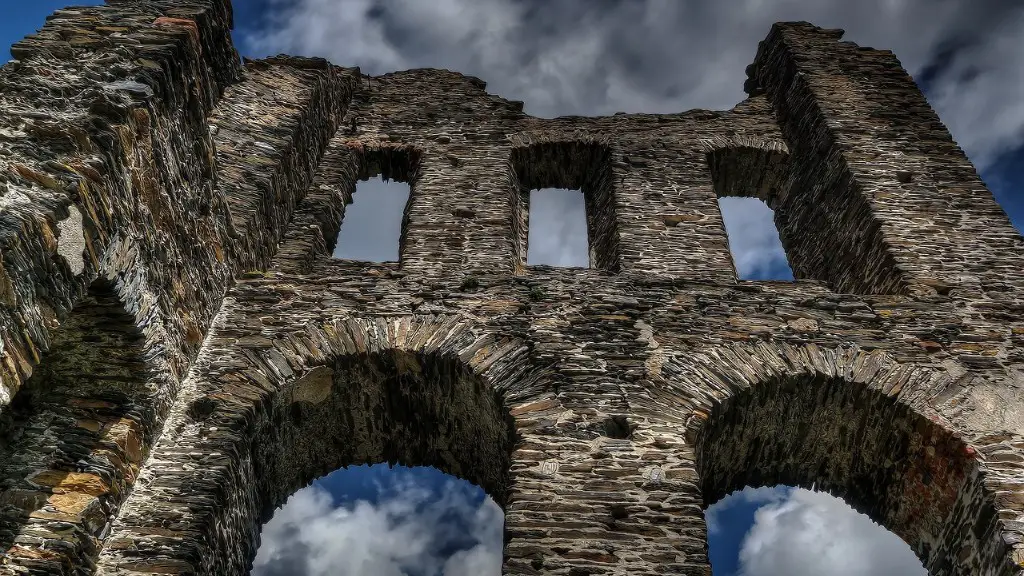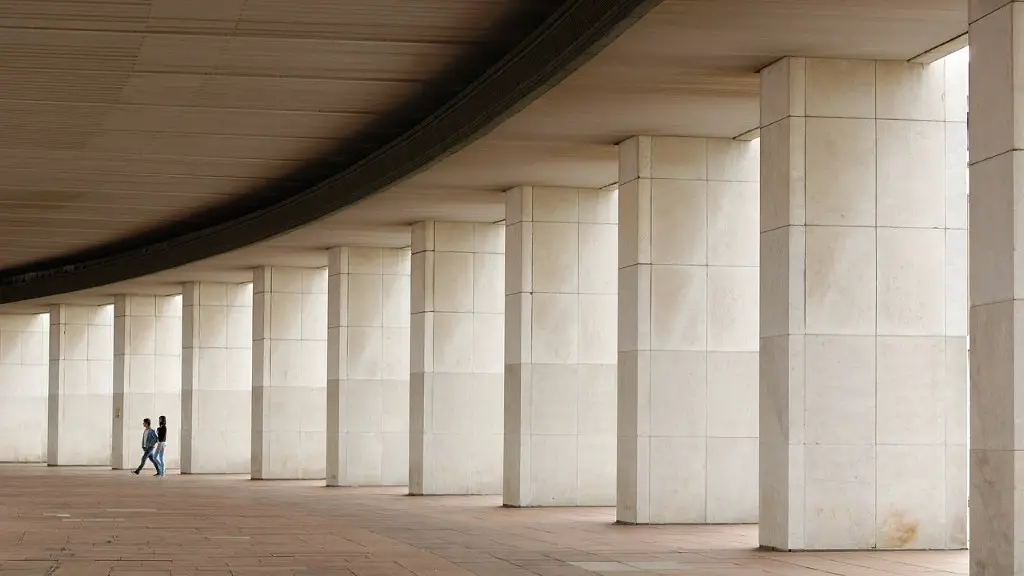Mannerist architecture is a style of large-scale architecture that emerged in the 16th century in Italian cities such as Rome, Florence and Milan. It is characterized by its baroque detailing, asymmetrical lines, ornate decorations and complex geometric designs. Mannerist architecture focuses on dramatic visual effects, graceful dynamic forms and excessive ornamentation. The style was developed as a reaction to the more classical style of Renaissance architecture and it flourished in the later 16th century before falling out of favor in the 17th century.
The term Mannerism originally referred to a scholar, writer or artist who practiced in a loose and indirect style and was derived from Gian Paolo Lomazzo’s treatise ‘Trattato dell’arte della pittura’ (1584). Mannerism is a style that emphasizes the theatricality of architecture and the sense of dynamism that can be created through the use of tension, movement and balance. Architects who used this style sought to create unusually elaborate or expressive forms, often in defiance of convention and with seemingly disordered designs and forms. One of the best-known Mannerist buildings is the Palazzo del Te in Mantua, Italy (1525-1535), designed by Giulio Romano.
Mannerist architecture first emerged in the late 1520s and was seen in the city of Florence in the early 1530s. It was developed by Italian architects and inspired by the work of Michelangelo, who introduced the concept of dynamic movement into Renaissance architecture. The style was also heavily influenced by the works of Donato Bramante and Sebastiano Serlio who explored the possibilities of combining different architectural elements.
Mannerist architects used intricate geometrical and geometric patterns, along with various colors and textures, to create visual tension and movement in their structures. They took the concept of symmetry and harmony from the Renaissance period, but pushed it further, creating buildings that were often characterized by intense colors and decoration. The style was often used for large-scale public and religious buildings, such as palaces, churches and civic buildings.
Mannerist buildings often feature skewed or distorted elements which create a sense of movement and energy. This is achieved through elements such as curved walls, twisted columns and unusual architectural details. Staircases, doors and windows were often placed off-centre to give the impression that the building was expanding and contracting. Mannerist architects also used irregularly shaped rooms, balconies and loggias to create visually dramatic effects. The inner spaces of mannerist buildings often possessed a feeling of mystery, with secret corridors and rooms.
While Mannerist architecture is sometimes seen as a rebellious reaction to the Renaissance style, some contemporary scholars have argued that the two styles have certain characteristics in common. Both styles place emphasis on the optical effects of their designs, and both make extensive use of exaggerated forms to create visual tension and a sense of dynamism. Furthermore, some of the most iconic Renaissance buildings feature exciting and expressive Mannerist elements, such as the dome of St Peter’s Basilica in Rome.
What Materials Were Used For Mannerist Architecture?
Mannerist architects made extensive use of various materials such as terracotta, marble and stucco to create their elaborate designs. They drew inspiration from the ancient Greek and Roman architectures and employed a range of techniques, including reliefs, moldings, statues and sculptures.
Mannerist architects also experimented with modern materials of the period, such as iron and glass, to create even bolder visual effects. They used a range of techniques to manipulate light, such as reflecting pools and the use of mirrors. These innovations enabled them to create complex geometric and sculptural patterns within the space.
Who Were The Most Prominent Mannerist Architects?
Mannerist architecture was developed by a range of artists and architects, including Giulio Romano, Raphael, Antonio da Sangallo, Giuliano da Sangallo, Giorgio Vasari, Michele Sanmicheli and Donato Bramante. Other notable practitioners include Baldassare Peruzzi, Vignola and Andrea Palladio, who introduced the Palladian style, which combined the drama of Mannerism with the classical style of the Renaissance.
How Did Mannerist Architects Express Their Ideas?
Mannerist architects tried to create visual effects that suggested movement and dynamism. They used highly elaborate decorative elements, often in defiance of the rational compositional guidelines of Renaissance architecture. Mannerist architects would also often devise geometric designs that defied the rules of classical symmetry, generating more elaborate shapes and patterns. By doing this, they attempted to capture a sense of life, motion and energy within the architecture.
What Impact Did Mannerist Architecture Have?
Mannerist architecture played a crucial role in the development of European architecture, bridging the Classical and Baroque styles. The style had an enduring influence and continued to be used even after falling out of fashion in the 17th century. The works of Mannerist architects continued to inspire architects and designers, who imbued their work with elements of this style.
Where Can People See Mannerist Architecture Today?
Mannerist architecture can still be seen in various cities in Europe such as Rome, Florence and Milan. Many of the iconic Renaissance and Baroque buildings were built in Mannerist style and feature ornate decorations, complex designs and interesting geometric patterns. Some of the most famous Mannerist buildings include the Uffizi Gallery in Florence, the Louvre in Paris, and St Peter’s Basilica in Rome.



